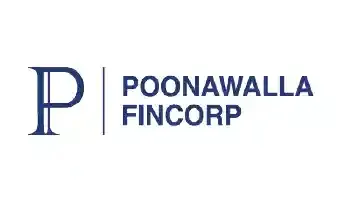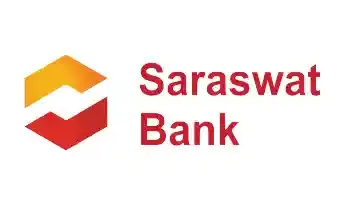Get instant loan offer suitable to your profile !

.webp)
On this Page:
Learn about margin money loan, their impact on your loan, and tips for managing margin money in education loan. Get insights on bank policies in this blog.
Many students dreaming of higher education either in India or abroad, take the help of an education loan to afford their education abroad. Thus, when you, as a student, are considering an education loan to cover your expenses, an important term called “margin money” should be known. This term will help you evaluate the right lenders from your education loan list.

Margin money refers to the percentage of the total loan amount that you have to pay from your own pocket. Many times, we have seen people asking, “What is margin money in a loan?”. So, you can define “margin” in an education loan as a part of the total educational expense that you or your family must contribute. These terms play an important role while you are calculating the loan amount. Let’s understand the concept better using an example.
Imagine Ajay is planning for higher education at a university in the United States, where the overall expenses for two years amount to INR 45 Lakh. Ajay approaches GyanDhan for his education loan requirements (smart choice, right?) and gets a loan sanctioned for INR 30 Lakh.
In this scenario, Ajay needs to arrange the remaining INR 15 Lakh himself. This INR 15 Lakh is the margin money. So, while the bank covers a significant portion of the education expenses (INR 30 Lakh), Ajay has to contribute INR 15 Lakh from his own funds.
Here’s a simple breakdown:




Margin money refers to the portion of the total education expenses that the student (or their family) pays from their own pocket. However, overall expenses include tuition fees, living costs, travel, books, insurance, and other necessary expenses.
Margin money is directly linked to the total cost of education, which gets changed based on the loan amount. A higher loan amount means a higher margin money. For example, if a bank requires a 15% margin, and the overall expense is INR 40 lakhs, the student must contribute INR 6 lakhs, and the bank will fund the remaining INR 34 lakhs.

When it comes to education loan margin money, various lenders such as public banks, private banks, and Non-Banking Financial Companies (NBFCs) have different requirements and specifications. Therefore, you will get different answers to the question, “What is margin in loan agreement?”. Thus, understanding the need for margin money involves looking at the practices of each type of lender.
Public banks like SBI, UBI, and BOB typically provide education loans with collateral, meaning the borrower must pledge an asset against the loan amount. To ensure that the borrower is financially backed up and shares some responsibility, these banks do not cover 100% of the education expenses. Instead, they require the borrower to contribute a certain percentage of the total cost. This borrower’s contribution is what we refer to as margin money.
For example, if a public bank sanctions an education loan, it might cover 85% of the total expenses, leaving the remaining 15% to be covered by the borrower as margin money.
However, private banks and NBFCs such as ICICI Bank, Axis Bank, IDFC First Bank, Credila, Avanse, Auxilo, and InCred. They offer 100% of the loan amount and don’t have the margin money concept. However, they do offer a 100% loan at a slightly higher interest rate.
| Bank | Margin Money |
|---|---|
|
Up to INR 4 Lakh - Nil |
|
|
Upto INR 4 Lakh - NIL, Above INR 4 Lakh - 5% |
|
|
Secured loans - 10% (Listed universities) Secured loans - 15% (Non - listed universities) |
Private banks, such as ICICI Bank, Axis Bank, and IDFC First Bank, offer unsecured education loans. These banks often have pre-approved lists of universities and colleges. One of the significant advantages of taking an education loan from a private bank is that it covers 100% of the education expenses. This means there is no requirement for margin money from the borrower.
NBFCs like Credila, Avanse, Auxilo, and InCred also provide unsecured education loans. Unlike private banks, NBFCs do not have pre-approved lists of colleges or universities. However, they share the same benefit of covering 100% of the education expenses, eliminating the need for margin money.
While both private banks and NBFCs do not require margin money and cover 100% of the education expenses, they generally charge a slightly higher interest rate compared to public banks. This higher interest rate reflects the unsecured nature of the loans and the increased flexibility they offer.

Private banks and NBFCs extend loans to students planning to study abroad with a 0% margin money. These loans are primarily unsecured education loans, and the approval depends on various factors.
However, if you want to avoid the higher interest rate of the private banks and NBFCs, then you can use a collateral of higher value to decrease the margin money to around 5-10%. Therefore, before confirming to the loan agreement, ask the lender about the details related to it.

Margin money isn't fixed; it is variable, which depends on the terms of the lender. Usually, lenders cover anywhere from 85% to 100% of your total education expenses. The remaining percentage becomes your margin money.
For example, for students planning to study in the US, lenders often cover the entire I-20 amount as the total cost of education. This amount generally includes inflated living expenses that the university provides to meet visa requirements.
In some cases, while calculating EMI, lenders increase the I-20 amount to ensure that a student can manage the financial burden. This may give the impression that the margin money is low since the bank appears to be funding a large portion.
However, in reality, your actual contribution might end up being higher. Why? Because the I-20 amount is usually high, which also increases the margin money, hence, you find yourself covering a significant portion out of pocket due to the gap between estimated
Let’s break it down with an example for clarity:










Margin money significantly influences the total repayment and loan tenure by determining the loan amount sanctioned. Let us understand how it impacts the loan repayments:
| Factors | Impact |
|---|---|
|
Loan Amount |
The more money you contribute to your education loan, the lesser will be the loan amount, thus, reducing the interest and making EMIs more affordable. Borrowers can often opt for shorter tenures, saving further on interest. |
|
EMI |
A lower margin contribution means paying less initially, which increases the loan amount. This results in a longer repayment period and higher EMIs. |
|
Dependency |
The low-margin money provides flexibility to those with limited savings but results in higher long-term financial obligations. |

Let us understand some of the main features of margin money in education loans:
Margin money in education loans is the amount you have to pay for your education expenses of studying abroad. It represents a part of the total education loan that you need to fund from your pocket.
The education loan amount is divided into different steps. The margin money is paid according to the requirements of the bank and the loan amount sanctioned. This division ensures that the student has a structured payment plan.
The percentage given by the bank for margin money is quite variable. It can decrease or increase based on the loan amount you request and your capacity to pay the margin money. Banks assess each loan application individually to determine the appropriate margin percentage. Please note that your placement chances and expected salary after your education also play an important role in deciding the margin money amount.
Private banks provide education loans to students with 0% margin money. This means the bank covers 100% of the educational expenses, making it easier for students who may not have funds available upfront.

Margin money requirements vary depending on whether the loan is for studying in India or abroad. Let us understand from the table below:
| Aspect | Domestic Education Loan | International Education Loan |
|---|---|---|
|
Margin Money Requirement |
5%–15% (Depends on lender) |
10%–20% (Can be more, depending on lender) |
|
Covered Expenses |
Tuition fees, basic living expenses, books |
Tuition fees, living expenses, travel, study material and more |
|
Lenders’ Approach |
Easier terms due to lower overall costs |
Stricter terms due to higher expenses involved |
|
Private Banks & NBFCs |
Often offer 100% financing (no margin money) |
Some lenders offer 100% financing but rates are higher |
|
Subsidies/Support |
More government schemes and subsidies available |
There are fewer subsidies, but specific schemes for studying abroad |

The Indian government offers several schemes to help students manage the financial burden of education loans, including margin money. These schemes and subsidies aim to make higher education more accessible, especially for students from economically weaker sections.








To know about these government subsidies in detail, read the Government Education Loan Scheme.

There are many misconceptions and myths about margin money. Let us first understand why margin money exists and then we will clear up some popular myths and misconceptions about margin money.
Margin money is a clear indicator that you are serious about your higher education and financially prepared. Banks ask for margin money as they share the financial responsibility with the borrower. Let us clear some of the myths about margin money:
Truth: Margin money is not a fee charged by the bank. It is your contribution to the total cost of the education loan. Banks use it to ensure you have a financial responsibility for your loan.
Truth: You don’t have to pay margin money upfront or in one go. Most banks allow you to deposit it in installments, usually semester-wise or as per your loan disbursement.
Truth: Many private banks and NBFCs offer loans with 0% margin money. They cover 100% of education costs but may charge higher interest rates.
Truth: A higher margin reduces your loan amount, but it does not always mean a better deal. It depends on your financial capacity and long-term repayment goals.
Truth: Margin money percentages vary across banks and depend on factors like the loan amount, type of lender (public or private), your choice of university or course, and country.

When it comes to education loans abroad, margin money is a concept that you must be very thorough with. It directly affects the loan amount and of course, the interest which you have to pay after the moratorium period. Public banks like
Check Your Education Loan Eligibility

Ask from a community of 10K+ peers, alumni and experts
Trending Blogs
Similar Blogs

Network with a community of curious students, just like you
Join our community to make connections, find answers and future roommates.. Join our CommunityCountry-Wise Loans
Best Lenders for Education Loan

ICICI Bank

Axis Bank

Union Bank

Prodigy

Auxilo

Credila

IDFC

InCred

MPower

Avanse

SBI

BOB

Poonawalla

Saraswat